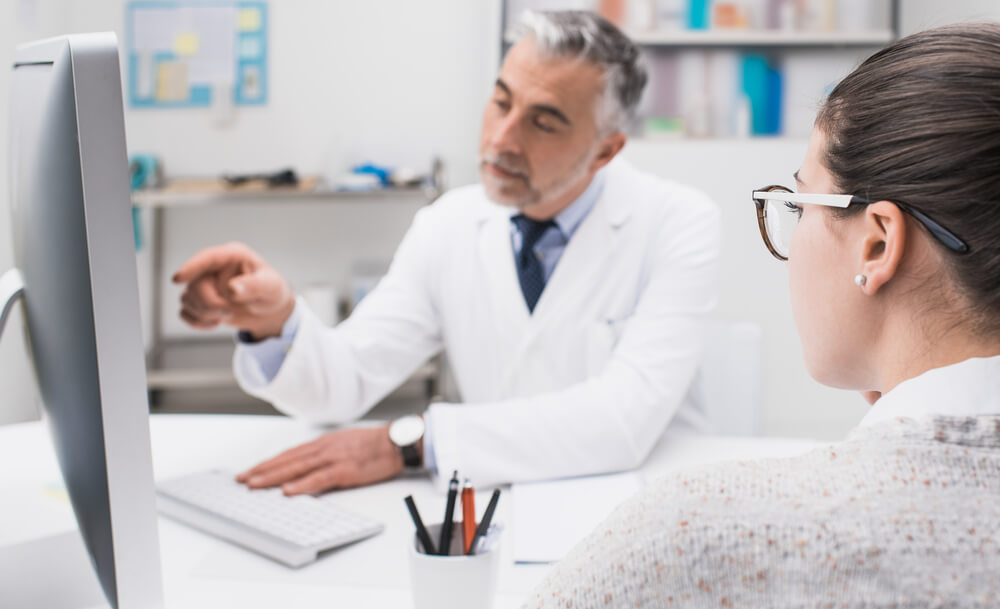Fibroids, or uterine fibroids or leiomyomas, are non-cancerous tumors in or around a uterus. These growths are a common occurrence among women, with an estimated 70-80% of women developing fibroids in the uterus by the age of 50. Despite their prevalence, many women are unaware of what fibroids are, the different types of fibroids, and the treatment options available.
This article aims to provide a complete guide on fibroids, including their types, symptoms, causes, diagnosis, and treatment options. If you’re searching for the best gynecology clinics in Weston and Pembroke Pines, FL, feel free to visit us at Advanced OBGYN Institute.
What Are Fibroids?
Fibroids are nonmalignant tumors that develop in or around the woman’s uterus. They are made up of smooth muscle tissue and fibrous connective tissue and can vary in size, shape, and location. Fibroids can grow inside the uterus (submucosal), outside the uterus (subserosal), or within the muscular wall of the uterus (intramural). They can be as small as a pea or as large as a grapefruit.
Different Types of Fibroids

There are four main types of fibroids based on their location within the uterus:
- Submucosal fibroids: These fibroids grow inside the uterus and can cause heavy menstrual bleeding, prolonged periods, and infertility.
- Intramural fibroids: These fibroids grow within the muscular wall of the uterus and can cause heavy menstrual bleeding, pelvic pain, and pressure on the bladder or rectum.
- Subserosal fibroids: These fibroids grow outside the uterus and can cause pelvic pain, pressure, and discomfort.
- Pedunculated fibroids: These fibroids grow on a stalk or stem attached to the uterus and can cause pelvic pain, pressure, and discomfort.
Most Common Fibroids Symptoms
The fibroids’ symptoms can vary depending on their location, number, and size. Some women may have no symptoms at all, while others may experience one or more of the following:
- Heavy menstrual bleeding
- Prolonged periods
- Painful periods
- Pelvic pain or pressure
- Bladder or bowel problems
- Difficulty getting pregnant or even infertility
Typical Causes of Fibroids in Uterus
The specific cause of fibroids is unknown, but there are several factors that can increase a woman’s risk of developing them. These include:
- Age: Fibroids are more typical in women between the ages of 30 and 50.
- Genetics: Women with a family history of fibroids are more prone to developing them.
- Hormones: Fibroids are sensitive to hormones, particularly estrogen, and progesterone, which can stimulate their growth.
- Race: Fibroids are a more frequent issue in African-American women than in women of other races.
The Difference Between Fibroids and Cysts
Fibroids are often confused with ovarian cysts, which are fluid-filled sacs that develop on the ovaries. While they may have similar symptoms, such as pelvic pain and pressure, fibroids and cysts are different in their origin and treatment. Fibroids develop in or around the uterus, while cysts develop on the ovaries. Fibroids are usually treated with medication or surgery, while cysts may go away independently or require surgical removal.
How Are Fibroids Diagnosed?
Fibroids are usually diagnosed during a routine pelvic exam or ultrasound. A doctor may also order additional tests, such as an MRI or hysteroscopy, to confirm the diagnosis and determine the location and size of the fibroids.
The Link Between Fibroids and Pregnancy
Fibroids can affect pregnancy in several ways, depending on their size, location, and number. Small fibroids may have no effect on pregnancy, while large fibroids or those located inside the uterus may cause complications such as miscarriage, preterm labor, or breech presentation. Large fibroids can also lead to infertility or difficulty getting pregnant.
However, most women with fibroids can have successful pregnancies with proper monitoring and treatment. In some cases, fibroids may shrink or disappear during pregnancy due to changes in hormone levels.
The Treatment Options for Fibroids
There are several treatment options for fibroids, depending on the size, location, and severity of symptoms. Some women may not require any treatment if their fibroids are small and asymptomatic.
- Watchful waiting: This involves monitoring the fibroids for any changes in size or symptoms without any active treatment.
- Medication: Hormonal medications, such as oral contraceptives, can help regulate menstrual bleeding and reduce the size of fibroids. Gonadotropin-releasing hormone (GnRH) agonists can also be used to shrink fibroids, but they are usually only used for short-term treatment due to their potential side effects.
- Surgery: There are different surgical solutions for fibroids, as well, including:
- Myomectomy: This involves removing the fibroids and preserving the uterus at the same time. It is typically suggested to women who wish to give birth in the future.
- Hysterectomy: This involves removing the uterus completely and is considered a permanent solution for fibroids. It is typically recommended for those ladies who do not want to bare children in the future or who have severe symptoms that have not responded to other treatments.
- Uterine Fibroid Embolization (UFE): This is a minimally invasive procedure that involves stopping the blood supply to these growths, causing them to shrink and die.
- Magnetic Resonance-guided Focused Ultrasound (MRgFUS): This is a non-invasive procedure that uses high-intensity ultrasound waves to get rid of fibroids.
Outlook for Patients With Fibroids

The outlook for patients with fibroids depends on several factors, including the size, location, and severity of symptoms and the treatment options chosen. Most women with fibroids are able to manage their symptoms and maintain their quality of life with proper treatment and monitoring.
However, in some cases, fibroids may continue to grow or cause complications despite treatment. Regular follow-up with a healthcare provider is essential for monitoring the fibroids and adjusting the treatment plan as needed.
The Bottom Line
Fibroids are a common occurrence among women, but many are unaware of what they are, the different types, and the treatment options available. By understanding the causes, symptoms, and treatment options for fibroids, women can make informed decisions about their healthcare and improve their overall quality of life.
Finding a good gynecology establishment that cares about both your reproductive and overall health is vital for women of any age. Women looking for outstanding facilities offering top-notch gynecological care may find many excellent choices in Pembroke Pines and Weston. However, not that many practices prioritize both compassionate treatment and patient education.
Essentially, patients can benefit significantly from their gynecology visits if they choose a facility that places a high value on educating them about their health. Exams and treatments in gynecology shouldn’t be the only focus of care for women. Gynecologists at our clinic always take the time to talk to their patients about how maintaining a healthy lifestyle and getting regular checkups can have a positive impact on their reproductive health and general well-being. That said, don’t hesitate to make an appointment at Advanced OBGYN Institute.






